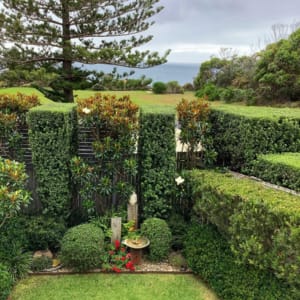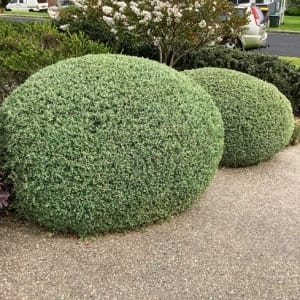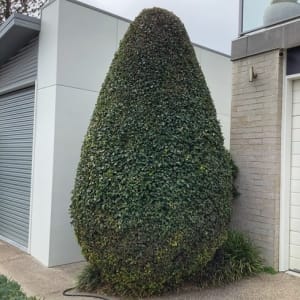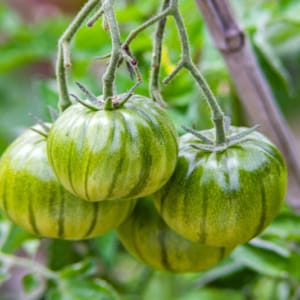Clip art: the sheer genius of topiary

by Mark Evans
Following another successful Sculpture Bermagui exhibition (a big shout-out to all the volunteers!) I thought this month we’d explore the theme of living sculptures, particularly topiary. While topiary is one well-known living-art form, other fascinating techniques include bonsai, espalier, and even crop circles!
Topiary combines horticulture and creativity and involves the careful trimming and shaping of plants into decorative forms. These can range from basic geometric shapes to elaborate spirals, animals, or abstract designs. A common and simple example is the hedge, often used to define garden boundaries, create walls, or provide screens. Another popular style is the standard, where plants are trained to have a clear trunk topped with a neatly trimmed or slightly shaggy ball of foliage.

Olive lollipops
The term topiary originates from the Latin topiarius, meaning landscape gardener, derived from the Greek topos (place or region). It refers to both the practice and the resulting sculpted plants. The earliest written mention comes from first-century Rome, where Pliny the Elder described how wealthy citizens’ gardens featured shrubs and trees shaped into animals, ships and human figures. This suggests even earlier origins, likely influenced by ornamental pruning in ancient Egypt, China and Japan.
Plants suited for topiary are evergreen, dense, and resilient to frequent pruning. Traditional choices include Buxus sempervirens (box), Taxus baccata (yew) and Ligustrum spp. (privet). More contemporary options include taller species such as Pittosporum tenuifolium (New Zealand pittosporum), Syzygium spp. (lilly pilly) and Murraya paniculata (murraya), while smaller plants like

Spikey saltbush balls
Westringia fruticosa (coastal rosemary), Rhagodia spinescens (spiny saltbush) and Helichrysum petiolare (liquorice plant) work well for low, rounded shapes.
Topiary can be shaped freehand or with a frame. Beginners often use wire guides, while experienced practitioners rely on skill and patience for intricate designs. Some frames remain in place permanently; others are filled with sphagnum moss and covered with climbers like ivy for quicker results. For instant gratification, pre-made topiary frames are available, simply add your plants.
If you’re inspired to see some of Australia’s most famous topiary, head to Railton, Tasmania, known as Australia’s Topiary Town. Or visit Wandiligong, Victoria, home to Australia’s largest living hedge maze, with over two kilometres of pathways.
Meanwhile, the town gardens are still buzzing with colour. Nerium oleander (oleander) keeps stealing the spotlight, joined by Hibiscus spp. and the ever-charming Magnolia grandiflora ‘Little Gem’. And Grevellea ‘Peaches and Cream’ – does it ever take a break from flowering? The tibouchinas are kicking off their purple reign, while the earliest Sasanqua camellias are starting to strut their stuff too.

Lilly pilly avocado
In the veggie patch this month, we’re sticking with peas. Keep sowing them. Come Anzac Day, it’s tradition to plant garlic cloves. Onions are next on the list. Have you ever tried a fresh-picked onion? They’re a revelation, rivalling the gap between homegrown and store-bought tomatoes. Plant a row or two and savour that sweet crunch. In the same family, add leeks and shallots though, for shallots, the simplest trick is to pop leftover store-bought ones straight into the soil. Winter brassicas like broccoli, cauliflower and kale are still a go, alongside soup favourites like swedes and turnips. For leafy greens, keep up with lettuce and silver-beet. This is your last call for beetroot seeds and, if you’re in a frost-free spot, carry on with carrots.
Lastly, if you’ve got gardening questions, plant or pest mysteries, or just want to chat? Drop us a line at gardening@thetriangle.org.au and we’ll do our best to sort you out.
Happy Growing


 phil-cruz-zKwMAdfshwM-unsplash
phil-cruz-zKwMAdfshwM-unsplash